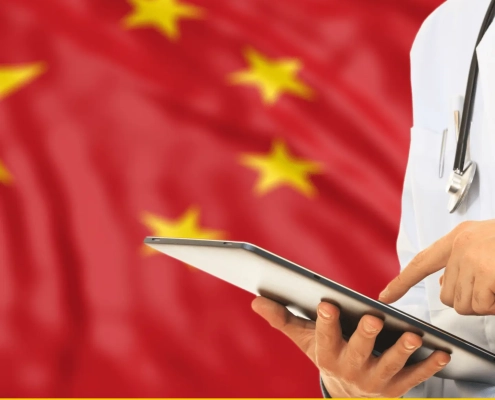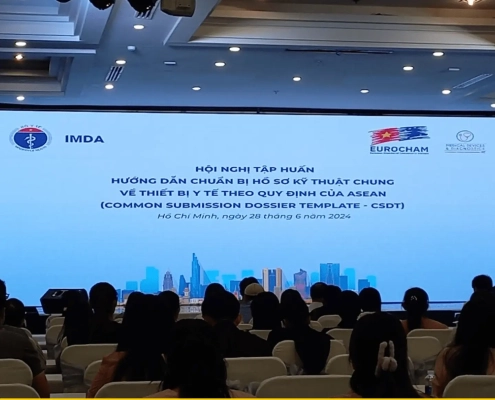Come grow with us in the US in Thailand in China in Korea in the Philippines in Taiwan in Hong Kong
VietNam: High Growth and Fast Market Access
What Medical Device Manufacturers Need to Know
Published July 24, 2020
THE ECONOMY
Vietnam has been quietly transforming their economy of 100 million people into a regional powerhouse. Through a combination of significant private investment, the US-China trade war, and their highly successful handling of the Coronavirus, Vietnam’s economy is expected to rebound quickly, especially with regards to manufacturing. GDP growth had averaged 8.5% growth from 2017 to 2019 (WHO Data) and manufacturing indicators have been positive, even in 2020, with recent reports showing 10% growth in June (General Statistics Office of Vietnam) in manufacturing compared to last year.
HEALTHCARE AND MEDICAL DEVICE SECTORS
As the Vietnamese continue to see their standard of living improve, healthcare will become a bigger and bigger priority. This increase in demand comes at a time when many government run hospitals are at, or over, capacity and using outdated equipment. As a result, the government has made a significant push to bring in private investors to help meet demand by building new facilities and providing additional services to Vietnamese citizens and medical tourists. For example, Vinmec, a not for profit organization has opened dozens of hospitals, including two JCI accredited locations, and has plans for over 20 new hospitals in the next 5 years as well. In 2019, total healthcare expenditure was estimated to be US$16-17 billion by FitchSolutions and is expected to grow at about 10%, equivalent to 5.5-6% of annual GDP, largely due to the rapidly growing private sector.
Through a combination of these factors, Vietnam offers medical device manufacturers with a significant opportunity for short-term and long-term revenue growth.
Fast Market Access in Vietnam
Medical devices are overseen by the Ministry of Health’s (MOH) Department of Medical Equipment and Construction (DMEC) and primarily adhere to Circular No. 30/2015/TT-BYT (“Circular 30”), effective since 2017. Currently, only low risk Class A and specific Class B, C and D products require import licenses. All products (including those not on the specified list) must be independently classified before an application will be reviewed or to ensure no import license is required. A full list of required products can be found here, but includes products like MRIs, X-ray imaging devices, patient monitors, implantables, ultrasound equipment, blood type analyzers, immuno-assay analyzers, and reagents. Class A products receive approval within 3 working days while applications for Class B, C or D devices with approval from 2 Reference countries (USA, Canada, Europe, Japan or Australia), requires 30 working days. Reviews fees range from US$40 to US$220. All products of all Classes will require Licenses after January 1, 2022.
Medical Device Registration Routes (UNTIL January 1, 2022)
New regulations went into effect on January 1, 2022. For the latest registration requirements, please click here.
Scenario #1: Class A Devices – Market Authorization Notification
Examples: Hematology analyzers, surgical and protective equipment, reusable instruments, tools for anesthesia, etc.
Class A devices must be registered with the DMEC and their license will remain valid in perpetuity. Applications will need to be submitted with basic documentation, including a Certificate for Free Sale (CFS), Letter of Authorization, and third-party classification. Approval is then issued within 3 working days.
Scenario #2: Class B, C or D Devices NOT listed in Circular 30 – Device Classification Only
Examples: Blood glucose meters, condoms, wound care products that uses silver, catheters, etc.
Higher risk devices not specified do not need to obtain a Product License until January 1, 2022. In the meantime, manufacturers of these products just need to obtain a formal response from a third-party classification entity assuring the product isn’t Class A. Once received, the products can be freely imported.
Scenario #3: Class B, C or D Devices listed in Circular 30 – Import Licensing
Examples: X-Ray machines, dialysis equipment, eyeglasses and contact lenses, long term implants of more than 30 days, ventilators, ultrasounds, etc. A full list can be found here for Medical Devices and here for IVDs.
These products will require an import license from the DMEC prior to importation and can take up to 60 days for a decision. In addition to the classification certification, higher risk products need to provide a CFS, evidence of a quality system, and documentation aligning with the ASEAN MDD, which includes a technical summary. Devices with approval in 2 reference countries are eligible for an expedited review process that only takes 30 days.
Bonus Scenario: Software
Software products do not currently require registration as specified in Point 13, Article 68, Decree 169/2018:
“13. Materials, software (medical software), accessories and medical gases are not required to be registered for circulation and import licensing under this Decree.”
Note: Products covered under a valid Import License issued from 2018 on will remain valid until December 31, 2021 (with the proper maintenance of supporting documentation).
Commercial Considerations
Vietnam’s medical device market is broken into two distinct markets, each driven by their own practices and local institutions. In the north, the majority of the medical device market is driven by national healthcare institutions, while the south is more privatized and caters to the growing industrial sector. As in most large markets, manufacturers will want to work with multiple distributors that specialize in a particular area and/or expertise. Asia Actual’s independent license holding service allows manufacturers the flexibility to use as many distributors as needed and can provide distributor identification and qualification services to help find the right partners to maximize growth. Innovative manufacturers with a more specific target market could also benefit from our Innovative Product Program
For innovative devices or high value capital equipment where the sales process is more direct, Asia Actual can provide introductions to prospects, customs clearance, warehousing and fulfillment services, allowing manufacturers to save a larger portion of each sale.
eCommerce is also rapidly growing in the region and manufacturers selling online in the US and Europe can create a cost-effective regional strategy to lay the groundwork for decades of revenue growth. With a population of 100 million and an economy growing at ~7% a year, Asia Actual helps manufacturers create, and manage, a low-cost, branded storefront that allows our clients to better compete locally.
CONTACT ASIA ACTUAL TODAY
Asia Actual is staffed by high level regulatory professionals. Please contact Asia Actual for regulatory support and assistance in determining the regulatory pathway that applies to your specific products in Vietnam.






